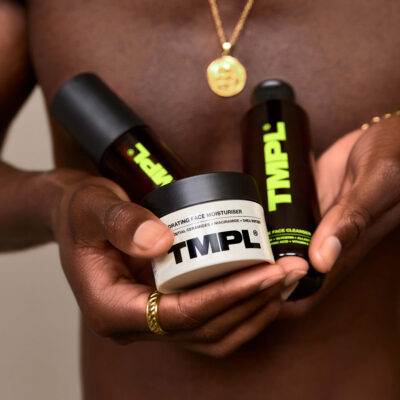
Sephora UK’s VP Of Global Merchandising On How Brands Fail And Flourish At The Retailer
According to Nigel Lawmon, VP of global merchandising for haircare at Sephora UK, brands that fail to gain momentum at Sephora tend to share one thing in common: They didn’t listen to the retailer.
“Retailers generally know how to get success for the brand. They have means and ways in which to communicate to the customer, to sample, to add value,” he said. “A lot of brands are quite single-minded in their approach. You need to think about the channel and what the consumer demands are in each of those channels and work with the retailer to deliver a great customer experience.”
Last month, Lawmon participated in a panel discussion during Beauty Independent’s Dealmaker EU/UK Summit along with Clare Horner, group beauty director at the British luxury department store chain Harvey Nichols. He noted that brands going into major retail should invest approximately 30% of sales in supporting their partnership with their retailer, especially during their first 12 to 18 months carried by it. Applying that percentage to an example, he advised brands that aim to hit $3 million in retail sales in the first year at a major retailer should budget about $1 million for marketing and other support efforts.
Lawmon, commercial director at Feelunique before Sephora acquired the beauty e-tailer in 2021, underscored Sephora’s role as a curator building an assortment that responds to its overall mix and consumer preferences. He said, “It’s about finding those hidden gems which are really fulfilling a gap in the market, have something very unique about them in terms of their product lineup and what they can do for consumers.”
Like many retailers today, Sephora UK is reducing the number of new brands it introduces. The retailer launched between 50 and 60 brands when its website premiered in October 2022. That year, it was making a big push and onboarded brands that were winners for Sephora in international markets beyond the United Kingdom. Next year, Lawmon estimated Sephora UK could launch just 10 new brands. He mentioned brands that have stoked robust awareness via their direct-to-consumer channel have the highest chance of capturing the retailer’s attention.
“If they’re doing $5 million on their DTC, well then they’ve had to build some awareness around that because, while Sephora is a brand builder, it has many brands, and the moments in time that you can get airtime as a brand are very few and far between,” said Lawmon. “We don’t hold any more than about 29,000 SKUs max at any one time in our warehouse. So, if we want to bring a brand in, one’s got to go out the bottom. We’re regularly discontinuing about the same amount of brands every year.”

Horner has seen the beauty landscape change significantly since her first stint in retail as senior beauty buyer for Harrods 20 years ago. She recounted that large legacy brands dominated the skincare category in the early aughts, and smaller brands had little to no market share. Now, with emerging brands proliferating, buyers are more challenged than ever in pinning down differentiated vendors.
“There’s been a massive shift,” said Horner. “As a buying team, we are inundated with brands now, and I think selectivity is really the main challenge.”
With eight brick-and-mortar locations throughout the U.K. and Ireland, Horner emphasized that Harvey Nichols doesn’t view itself as a traditional department store, but rather a “large boutique.” Its beauty buying team often looks abroad to identify emerging brands that have sales traction in their native markets to bring them to the U.K. Brands with compelling and distinct founder stories and positions in the market are prioritized at Harvey Nichols. Emerging brands that make the cut are merchandised in the department store’s Beyond Beauty section, which has a dedicated sales staff.
Horner stressed beauty brands should participate in Harvey Nichols’ initiatives to connect with its customers. She encourages them to be involved in store events like beauty master classes and key shopping events. “It’s a very engaged customer,” she said. “They are incredibly loyal, and I think that’s what the department store and fashion heritage has, that sort of engagement with their customers. That’s stuck with us.”
Horner and Lawmon agreed that it’s become harder for emerging brands to secure a foothold in the U.K. with mid-market and entry-level retailers like Debenhams and Cult Beauty either out of business or less relevant than they were before. “You’ve got department stores at the luxury end, which create a platform and help promote or sell on an international level,” said Horner. “So, going to other markets and saying, ‘I’ve got my range stocked with Harrods or Selfridges or Harvey Nichols,’ but actually getting some core volume in the U.K. market is more challenging for the newer independent brands.”
Lawmon predicts the U.K. retail landscape will course-correct over time. “I strongly believe that that gap is going to be filled by somebody else or a few other players,” he said. “They might not be the ones picking up the indie brands, but they might be focusing on a particular niche or offer some service.”

Speaking of Amazon, Lawmon argued that specialty retailers like Sephora have a leg up on the e-commerce giant due to attributes that elevate the shopper experience such as customer service and loyalty schemes. Horner pointed out that fashion-led luxury brands are still wary of being listed on Amazon.
“Try and build your brand in your own way with your own DNA, get your DTC to a certain level, invest in awareness around your brand and then think laterally about what retailer options you pursue,” she recommended. “I think that Amazon is just so big. Brands just get lost in their landscape.”
This article was updated on Dec. 13.




